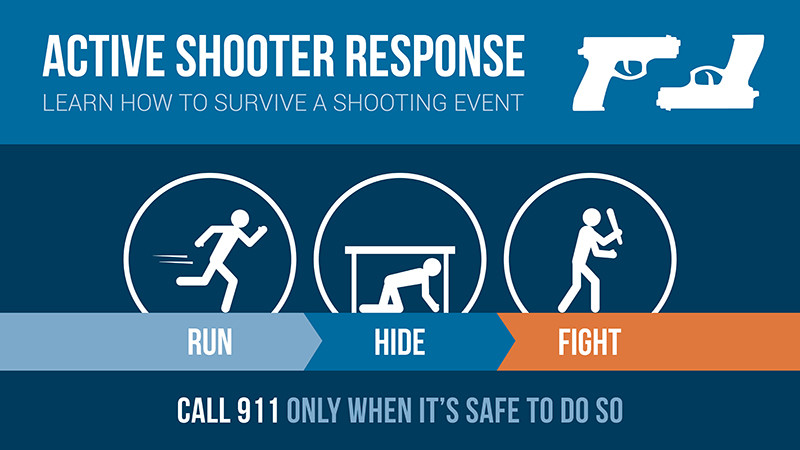Uncategorized
An Employee’s Perspective
By: Kati Jo Barber, Regional Account Executive
Tradition has always been very important to me. The day I was born, I was given the name Kati Jo; named for both my maternal great grandmother, Katie, and my maternal grandmother, Josie. Although I’ve never met her, my house is filled with Great Grandmother Katie’s old furniture. I’ve spent countless hours in the kitchen with Granny (Josie), and we’ve even written a cookbook together. I love feeling connected to my family roots, history and tradition.

Image from The Fricassee 1947
Some of my favorite stories about Granny revolve around how much she hated school. We often joke with her about how she disliked sewing class so much that she brought her project home and had Great Grandmother Katie sew it for her. She avoided getting involved, but the one club she did join was the Distributors’ Club. She said she joined because she got to leave school early, but that meant she had to spend the second half of her day at a job. The club helped her get a job at Goudchaux’s. She worked in the sports wear department, and still remembers buying her graduation dress from the store for $17. She recently pulled out her yearbook and pointed to the Goudchaux’s ad in the back, which read, “Baton Rouge’s Most Popular Department Store.” Granny said that was a very true statement.

Photo from The Advocate
My dad was one of eight children; 6 of whom were boys. I can only imagine how much trouble they used to get into when they were growing up. Every year, my grandmother would take them to Goudchaux’s to get their school uniforms. My dad and uncles still tell stories about hiding in the racks, and poking each other with straight pins they would find in the cracks of the floors. My favorite story is when the oldest three boys, my dad included, went into the store for the first time with their new baby sister, Evelyn. Mr. Erich Sternberg offered each of the boys their very own pony as a trade if they would give him their new baby sister. The Barber boys left very disappointed that day when their mother wouldn’t agree to the trade. Years later, my dad went back to Goudchaux’s to work in the young men’s department. He still loves to give advice on clothing, so I am sure he was a great salesman at the store for his 3 years there. He was excited to tell me that within 6 months of working, he was a manager. And, his department had the second highest increase in sales after he took over. His secret to success was getting to work early every day to organize his department before opening.
When I began the interview process at Highflyer HR, I had no idea that I was interviewing at a Sternberg company. I was so excited to later find out, because I know and appreciate the impact they have had on my family, the business community, and the city of Baton Rouge. I was thrilled to accept the job as Highflyer HR’s Regional Account Executive. Every day I get to work with business owners and HR professionals to improve their human capital management processes. My background as a custom software project manager helps me to guide my clients from the decision making process through implementation of the Highflyer HR software.
It is truly an honor to work for the Sternbergs. I’ve already learned so much about business, hard work, customer service and leadership from them, and to get to work early! I am proud to be a third generation Sternberg employee. I will work hard to make not only my family proud, but the Sternbergs, too!

Uncategorized
Beau Bowman, Highflyer H.R., National Director of Sales
Retired USAF Security Specialist.
Louisiana State Constable, St Bernard Parish, Chalmette La.
Louisiana State Emergency Chaplain.
Recently I attended a First Person Active Shooter Training, for the Archdiocese where I am a member. I was then asked to develop a plan for the Church Parish & School, on how to prevent and defend against this scenario. This exercise naturally sparked some thought on the issue in our workplaces. When asking clients about the issue I was surprised by how many have not planned or trained beyond calling 911. This just will not suffice, so we took some time to put some resources together to assist you in your own business plan from sources like DHS.
In many cases, there is no pattern or method to the selection of victims by an active shooter. These situations are, by their very nature, unpredictable and evolve quickly. The U.S. Department of Homeland Security (DHS) offers free courses, materials, and workshops to better prepare businesses, schools, places of faith and any type of organization to deal with an active shooter situation and to raise awareness of behaviors that represent pre-incident indicators and characteristics of active shooters. Below are useful resources for planning and developing your training program:
Active Shooter: What You Can Do?
The 2013 Report on the National Summit on Multiple Casualty Shootings, identified five non-linear components of mass casualty violence prevention:
• Identifying a person posing a potential threat of violence;
• Notifying the appropriate authorities with this information;
• Evaluating the threat credibility;
• Intervening to prevent the threat; and
• Documenting the intervention and disseminating the information within applicable laws and regulations
Our focus should be on the five topics above to develop a plan for active shooters.
Threat Assessment Teams
Research shows that perpetrators of targeted acts of violence engage in both covert and overt behaviors prior to the attacks. Another resource most agencies can use to identify, evaluate, and The Threat Assessment Team’s objective is to use internal agency specialists (which could include personnel from the internal security office, Office of the Inspector General, Office of the Chief Human Capital Officer, Office of General Counsel, etc.) to prevent violence from occurring. Members are responsible for addressing threats, confronting violent behavior, and assisting in assessing potential for violence. TAT members consider, plan, prepare, share, and, in some cases, move on to action. The TAT serves as a central convening body that ensures that warning signs observed by multiple people are not considered isolated incidents and do not slip through the cracks, as they actually may represent escalating behavior that is a serious concern.
Know the Warning Indicators
Some people commit violence because of revenge, robbery or ideology – with or without a component of mental illness. While there is no way to predict an attack, you can be aware of behaviors in coworkers that might signal future violence:
· Excessive use of alcohol or drugs
· Unexplained absenteeism, change in behavior or decline in job performance
· Depression, withdrawal or suicidal comments
· Resistance to changes at work or persistent complaining about unfair treatment
· Violation of company policies.
· Emotional responses to criticism, mood swings
· Paranoia
Plan & Train
Homeland Security has developed an independent study course entitled Active Shooter: What You Can Do. This course was developed to provide the public with guidance on how to prepare for and respond to active shooter crisis situations.
Upon completion of Active Shooter: What You Can Do, employees and managers will be able to:
§ Describe the actions to take when confronted with an active shooter and to assist responding law enforcement officials
§ Recognize potential workplace violence indicators
§ Describe actions to take to prevent and prepare for potential active shooter incidents; and
§ Describe how to manage the consequences of an active shooter incident
The online training is available through the Federal Emergency Management Agency Emergency Management Institute. https://youtu.be/GEjc_xZGaSo
Available Materials for Download to assist you in planning.
§ Active Shooter Preparedness Program Fact Sheet
§ Active Shooter Booklet
§ Active Shooter Pamphlet
§ Active Shooter Poster
§ Active Shooter Poster (Spanish)
§ Active Shooter Pocket Card
§ Active Shooter Pocket Card (Spanish)
Planning and Response to an Active Shooter: An Interagency Security Committee Policy and Best Practices Guide
Are you prepared? For more information on how to develop a plan to prevent and defend against an active shooter scenario, please give us a call at (844) 398-7800 or click here to fill out a form and we will contact you!

Communication Strategies, HR Department Support, Industry Expertise, Stress Management
Rise and shine. Kiss the kids and your partner. Feed the dog. Grab breakfast and head out the door. Jump in the car, on the bus, or subway. The sun is rising. It’s a new day. The work day is spread out before you.
Sounds wonderful, but sometimes it’s not.
When we go to work we take along an invisible backpack containing the worries of our family life (perhaps the child who didn’t sleep, the spouse who is unhappy, or the recently diagnosed mother), and a load of our own anxieties and concerns. The backpack is heavy, made heavier so by the pressures of our jobs. When we experience unhealthy amounts of stress, we physically are not at our best. Sleep is often interrupted, as is healthy eating, and good habits such as exercise. We also often self-medicate with medications or alcohol.
We all experience stress. Some stress, called eustress, is healthy. Eustress is motivating. It helps us get off the couch, get to work on time, get the report completed, or apply for the promotion. However, when we tip into distress, stress becomes unhealthy and unproductive.
It is usually pretty easy to identify an employee in distress. He or she may be anxious, moody, or unusually irritable. Why? It’s actually a physical reaction: When in distress we are only able to access a small section of our brain, the amygdala, the center for fight or flight response. When in this state, the manager’s brain cannot distinguish between real and perceived threats. This often gets in the way of relationships with colleagues. Conversations that could be collaborative negotiations instead end unproductively and harm the development of trust.
Constructive feedback is a great first step to providing assistance. Acknowledging the great work that your manager regularly produces, and that there has been a shift.
Here’s some sample dialogue that may help: “John, I hope you know how much you are valued at our firm. You are a key member of the team and we rely on your expertise. However, I’m worried about you. I noticed how you responded to Cindy in the meeting. I know her question was a bit off topic, but typically that would not have bothered you. I am wondering if there is something going on that you might be willing to share with me.”
If your manager is depressed or his/her anxiety is debilitating it may be time to refer the manager to the company’s EAP [Employee Assistance Program] or directly to a therapist for help. However, there may be other options. Executive coaching, with a qualified accredited coach, can provide objective feedback through validated diagnostics such as a 360 instrument, and one-one-one sessions to help the manager move forward towards more effective behaviors.
Katie Riker Sternberg, ACC, MSW, LMSW, MBA
About the Author: Katie Riker Sternberg, ACC, MSW, LMSW, MBA, is the Founder of Momentum Executive and Personal Coaching, LLC. Katie’s 25 years of experience is a blend of senior marketing leadership, entrepreneurship, independent consulting to business leaders, individual counseling and executive coaching. You can follow Katie on Facebook to keep up with her latest posts.
For more information on how Highflyer HR can provide you and your company with effective stress management solutions, contact us today!

Communication Strategies, Company Culture, Engaged Workforce
April is National Stress Awareness Month!
Consequences of too much stress within an organization may include increased turnover, spikes in health care costs, loss of valuable and productive employees, and loss of office collegiality. Employees caught managing organizational strife may individually struggle with physical or mental consequences.
“When we go to work we take along an invisible backpack containing the worries of our family life (perhaps the child who didn’t sleep, the spouse who is unhappy, or the recently diagnosed mother), and a load of our own anxieties and concerns. The backpack is heavy, made heavier so by the pressures of our jobs. When we experience unhealthy amounts of stress, we physically are not at our best.”
Katie Riker Sternberg, ICC, MSW, LMSW, MBA
Momentum Personal and Executive Coaching, LLC
Signs of Stress in the Workplace:
- Excessive workload (i.e., increase in overtime hours, work over the weekend)
- Mood swings (i.e., irritable, anxious, abnormally sensitive)
- Decrease in productivity
- Increase in absenteeism (i.e., increase in sick or personal days)
- Disengaged (i.e., less social and more secluded than normal)
- Fatigue (i.e., make more mistakes than usual)
- Job dissatisfaction
- Conflicts with bosses or coworkers
HR Strategies to Prevent Stress
1. Stress Management Coaching and Training
Adopt stress management education into your employee wellness program to educate employees on how to cope with day-to-day stressors. Executive coaching and team training are useful options, as they provide support, guidance, and resolution to stress-related problems. Have a therapist or health professional speak to your staff to provide knowledge on the effects of stress and tips to prevent them. Hold stress management workshops or schedule “Lunch and Learns” that cover topics on helping employees manage and reduce stress in their work and personal lives. Helping employees deal with stress improves engagement by contradicting things like the physical and mental damage stress can bring upon an individual.
2. Open Communication
Maintaining open communication and consultation are critical to leadership and preventing stress. Create an atmosphere where people feel it is okay to talk to management about problems they are facing. Talk with employees regularly to make sure everyone is clear about their job specifics and what is required of them. Provide clear business objectives, deadlines and expectations to make workdays more productive and less stressful. Carry out regular employee surveys to help you find any stress-related problems with individual managers or employees.
3. Flexible Schedules
The struggle to balance work and life is one of the main stressors employees face. Problems of commuting to and from work, finding time in the day to complete much-needed errands and still fit in quality time with family, personal obligations and many more challenge employees daily. Provide opportunities for employees who struggle with these daily challenges to contribute ideas on planning and organizing their own schedules. Having more control over their own schedule can boost employee morale and eliminate much of the daily workplace stressors. Encourage a healthy work-life balance by working with employees to offer flexible work arrangements, such as flexible hours, telecommuting or video conferencing, part-time work and job-sharing.
4. Value Employees
To maintain a happy, healthy and productive workplace, it is important to help employees cope with all stressors in their life, including the issues you cannot change. Try offering on-site services to employees at a discount. Services to implement might include car washes, oil changes, dry cleaning, mailing services, restaurant food delivery, eyeglass care, shoe shines, etc. Massage therapy is one of the best ways to help employees relax and relieve stress. Have a massage therapy service come to your office to offer neck and shoulder massages. Stress triggers all types of medical conditions. Provide free monthly health screenings for blood pressure or cholesterol. Programs like this can help employees identify stress-related health risks and provide knowledge of ways to improve their health. Partner up with a local gym to create weekly group exercise classes or discounts when purchasing memberships. Exercising and healthy eating can provide drastic changes in stress levels, resulting in increased productivity, energy, and inspiration to do better.
Help employees feel capable of dealing with all stressors in their lives by implementing some of the above HR strategies and maintain a happy, healthy and productive working environment.
Stay tuned for next week’s blog to hear more on stress management in the workplace through the eyes of Katie Sternberg, ICC, MSW, LMSW, MBA of Momentum Personal and Executive Coaching, LLC!






